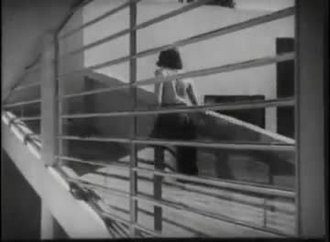
"Architecture and the Image in Motion. Eisenstein, Le Corbusier and the Cinematographic Space"
Vortrag von Dipl.-Ing. Ulrike Kuch
11. Dezember 2015 | Rom
Im Rahmen der Konferenz "The silence of images. Theories and processes of artistic invention” im MAXXI (Museo Nazionale delle Arti del XXI secolo) in Rom wird Ulrike Kuch am 11. Dezember 2015 einen Vortrag mit dem Titel "Architecture and the Image in Motion. Eisenstein, Le Corbusier and the Cinematographic Space" halten.
Der Vortrag beschäftigt sich mit der Frage der Bildhaftigkeit von Architektur am Beispiel des Films, genauer: in Arbeiten von Le Corbusier und Sergej Eisenstein. Davon ausgehend geht es weiterhin um die Bildhaftigkeit der Architektur im allgemeinen, insbesondere um den Zusammenhang von architektonischem Raum und seiner Bildhaftigkeit, der perspektivisch auch für die Bildwissenschaft Ansätze einer Neuorientierung bietet.
Die Konferenz wird gemeinsam organisiert von der Universität La Sapienza in Rom, vom MAXXI Rom, den Vatikanischen Museum in Zusammenarbeit mit dem Kunsthistorischen Institut und dem Gabinetto di Disegni e stampe degli Uffizi in Florenz unter der Schirmherrschaft des Comité International d’Histoire de l’Art (CIHA).
Weitere Informationen unter www.esteticas.unam.mx/CIHA/documents/Il%20silenzio%20delle%20immaginiFEB15CFP_eng-1.pdf
Ulrike Kuch will give a talk at the conference "The silence of images. Theories and processes of artistic invention” at MAXXI (Museo Nazionale delle Arti del XXI secolo) in Rome.
The paper explores how the “Bildhaftigkeit” of architecture and architectural space is inspired by film, and in turn on how film was influenced by the “Bildhaftigkeit” of architecture through the works of two of the most famous protagonists of avant-garde art in the 1920s: Sergej Eisenstein and Le Corbusier. At the same time, the paper draws a line under the present discourse on the “Bildhaftigkeit” of architecture. As our understanding of the “image” changes, so too must our understanding of the “Bildhaftigkeit” of architectural space itself, calling into question the prevailing opposition of space and image and, as the paper shows, replacing it with a specific “Bildhaftigkeit” of architecture. In turn, the “Bildhaftigkeit” of architecture adds a new dimension to the meaning of the image in visual studies.
The conference is organised by Sapienza University in Rome, MAXXI Rome, Vatican Museums, in collaboration with the Kunsthistorisches Institut in Florenz and the Gabinetto Disegni e stampe degli Uffizi, under the patronage of Comité International d'Histoire de l'Art (CIHA).
Further information www.esteticas.unam.mx/CIHA/documents/Il%20silenzio%20delle%20immaginiFEB15CFP_eng-1.pd
